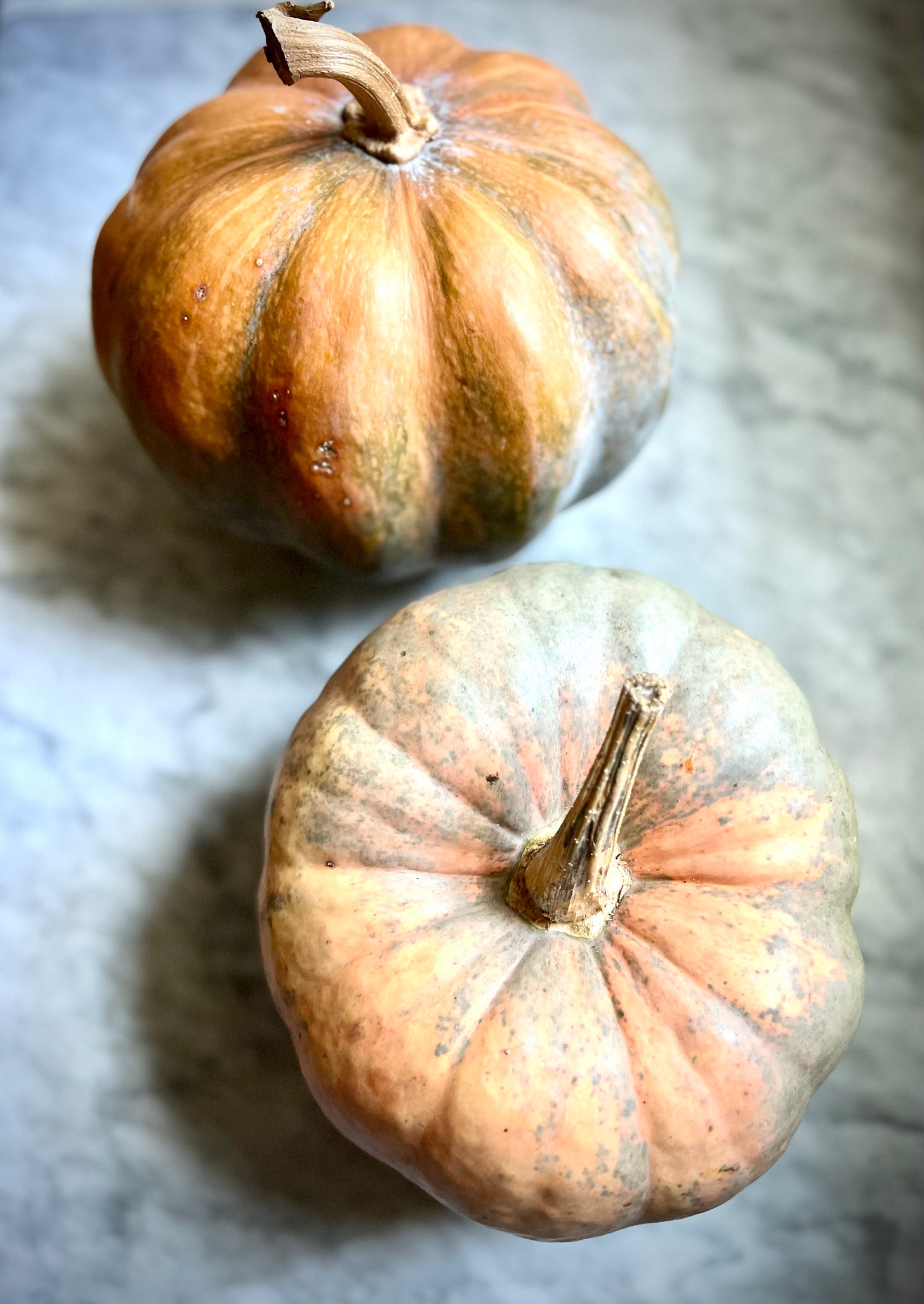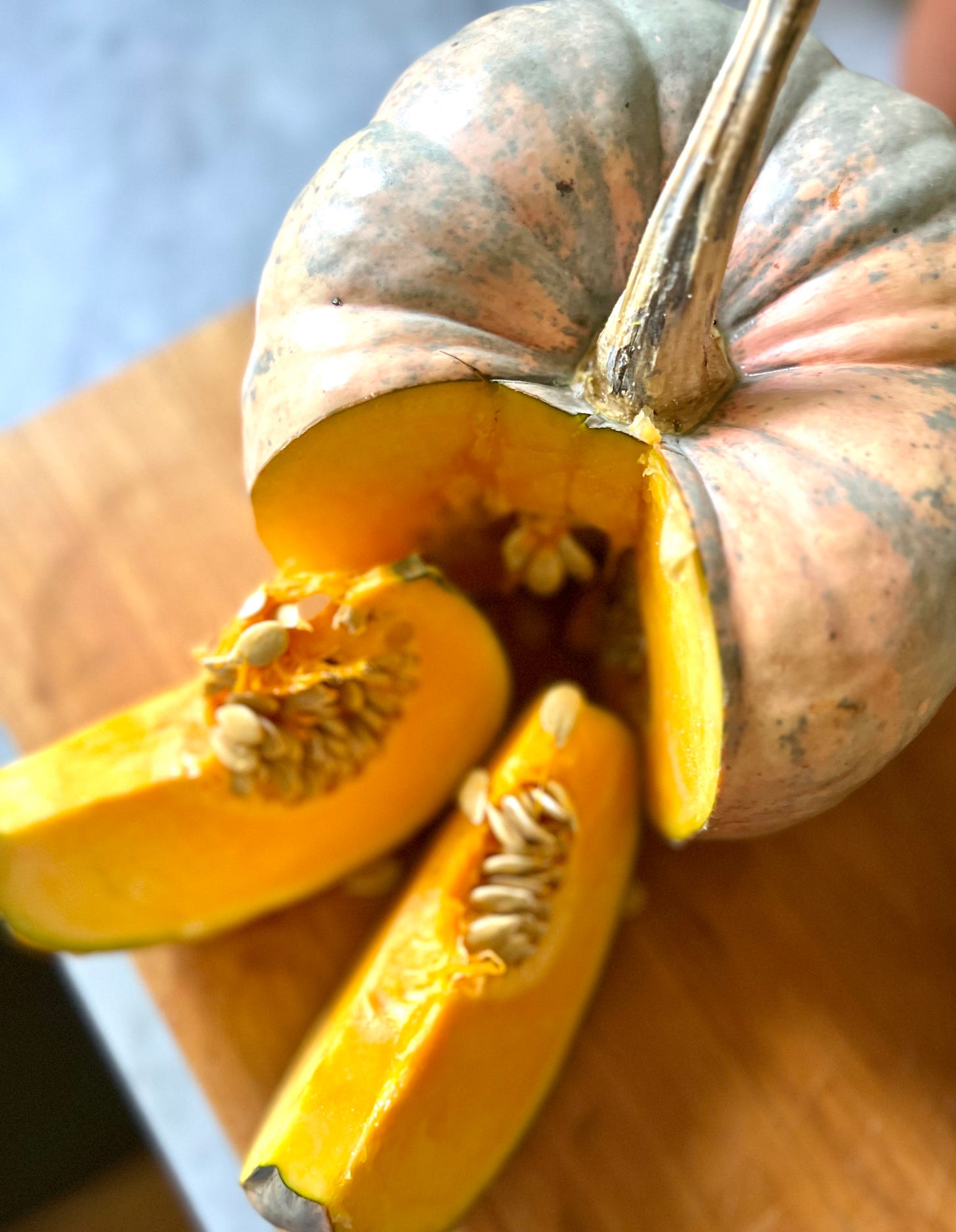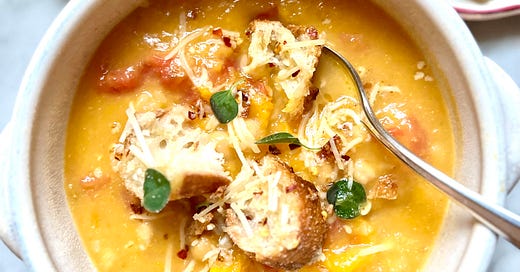A DIY Halloween Pumpkin Stew - No. 253
How to roast your own pumpkin for cozy cool weather stews & baking pumpkin bread, too
MOST PEOPLE USHER IN HALLOWEEN with candy. And I don’t want to be a party pooper, so go ahead and binge on your peanut butter cups and M&Ms. Once that’s over, what about roasting a pumpkin?
Last year I baked a whole pumpkin with onions, cream, crusty bread, and Gruyere cheese inside until it was soft, tender, and soufflé-like.
This year I went in search of mums for the front steps and came home with the most beautiful heirloom pumpkins instead. I thought for a minute about placing them outside like everyone else, but, why would I do that when I could roast them?
The weather was about to turn chilly here in Nashville, and I thought of cubes of roasted pumpkin folded along with chickpeas and tomatoes into a Mediterranean stew. I thought of my favorite pumpkin bread baking in the oven.



How can two pumpkins look so similar outside but be so different inside?
That Porcelain Doll pumpkin, above, weighed in at 7 pounds, 9 ounces. After roasting, it yielded 2 quarts (about 8 cups) of cubed squash for cooking.
The Fairytale pumpkin (below), on the other hand, with deep-orange flesh inside, resembled sweet potatoes in color and flavor. I couldn’t wait until it cooled and I could puree the pulp and bake a loaf of my favorite pumpkin bread. Plus freeze some pulp for a Thanksgiving pie!
A cousin of the famed Cinderella pumpkin—the inspiration for the carriage in Disney’s film Cinderella—the Fairytale belongs to a family of very pretty scalloped pumpkins. The most famous is the Rouge Vif D’Etampe pumpkin, much loved in the French kitchen. In 1883, the famous seed man W. Atlee Burpee purchased its seeds in Paris and introduced these fairytale-like pumpkins back to the New World where ironically they had originated centuries before.




